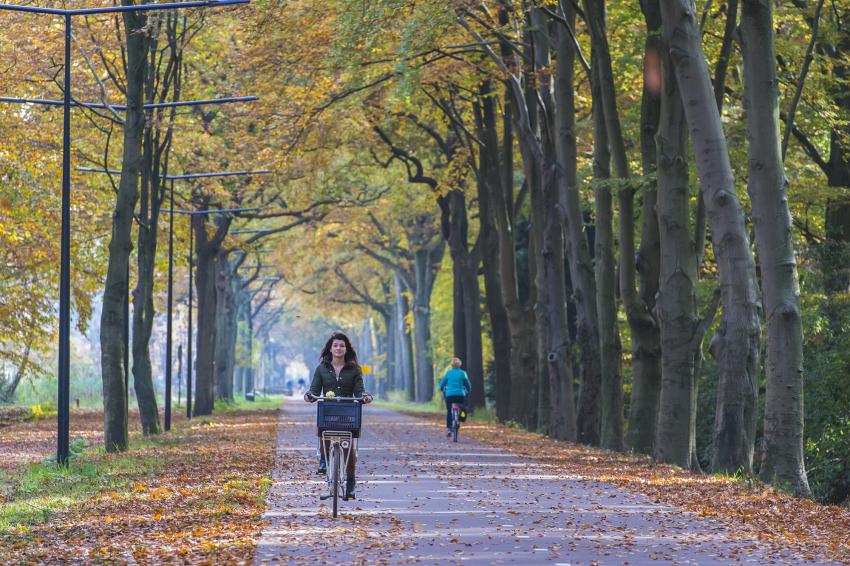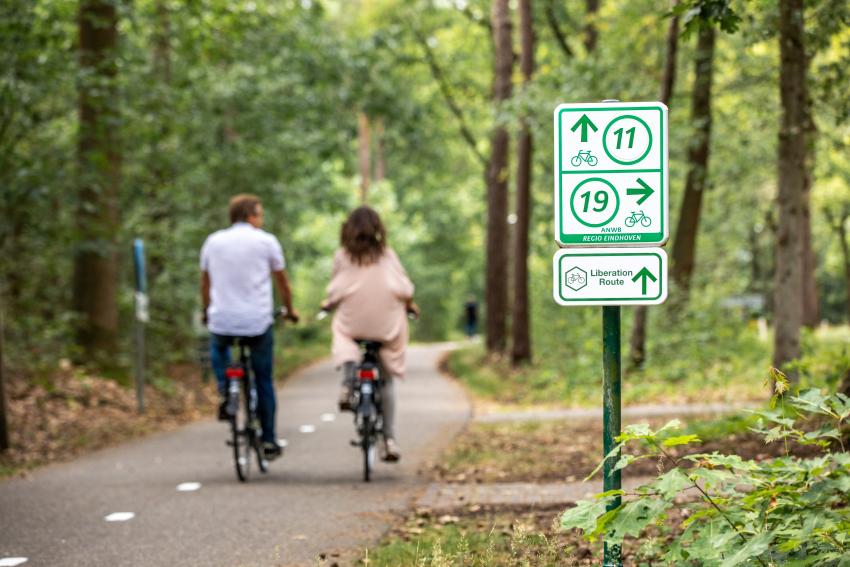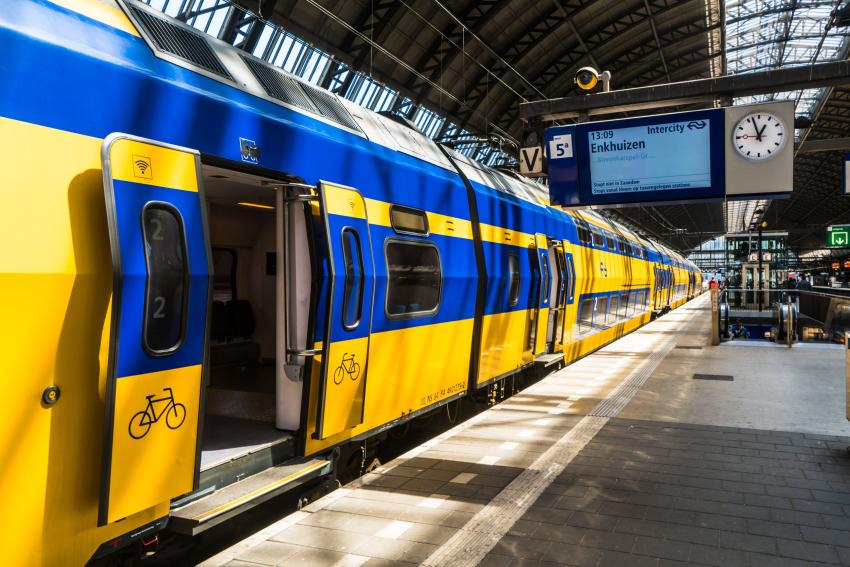A network of bicycle paths covers the entire country and makes getting around by bicycle (fiets) convenient and relatively safe. However, you should always watch out for electric bicycles, motorcycles, and scooters. You should, in particular, watch out for fat bikes, which are a type of electric bike. Fat bikes are sturdy and have wide tires, and some may have been modified to go at speeds that exceed the legal limit of 25 km/h for electric bikes.

A few tips
- Bicycles should always be parked in the designated areas/racks. When you park your bicycle, you should always lock it to something. It is worth investing in a good lock.
- It is also a good idea to make your bicycle stand out by decorating it (with flowers and/or painting it in a distinctive color). Bicycles that stand out are less likely to be stolen.
- Your bicycle should have a bell, and you must have working lights (you can be fined otherwise). You can also be fined if you do not turn on your lights when it is dark.
- Although helmets are not mandatory, more people are choosing to wear one.
- It is illegal to be intoxicated while cycling and you can lose your driving license.
- Those seen holding their mobile phone while cycling can get a €95 fine.
- Never purchase a bicycle from someone on the street; it is most likely that the bicycle has been stolen. There are many second-hand bicycles for sale at bicycle stores.
Road traffic signs and regulations in the Netherlands
You should follow the rules of the road at all times and use the cycle lane (fietspad). If there is not a separate cycle lane, there should be a sign that tells you that you should use the road. You are not allowed to cycle on footpaths.
The Ministry of Infrastructure and Water Management has produced a brochure called Participating in Dutch Traffic which highlights the most important Dutch traffic rules and regulations and describes some traffic signs that are unique to the Netherlands. They have also produced an English translation of all the Dutch traffic rules, regulations and traffic, Road Traffic Signs and Regulations in the Netherlands. Both these documents can be downloaded from the government.nl website.
Traffic test for schoolchildren
At most primary schools, children take a national traffic test (verkeersexamen) in group 7 or 8 (aged 10 to 12). The children have lessons in school to prepare them for the test. The test is administered by Traffic Safety in the Netherlands (Veilig Verkeer Nederland / VVN) and includes a theory test, a bicycle inspection, and a practical test. Those who pass receive their Traffic Diploma (Verkeersdiploma).
Cycle route network
You can plan your own routes using the cycle route network. Cycle paths are signposted with intersection numbers and arrows showing you the way. Each intersection has an information panel with a map of the area’s routes, including the distances, so you can always modify your trip.
There are also several themed routes. See Visit Brabant or use one of the many apps available to find the cycle, walking and motorcycle routes.
For more information about Dutch cycling culture and tips on how to survive, see survival guide to cycling in the Netherlands. You might also be interested in Brainport Bike School where you can learn to cycle like a local! Not only will you learn how to navigate Dutch roads, but you will also get to know the region and connect with others.

Bring your bicycle on the train
You can bring your bicycle with you on the train during off-peak hours on weekdays (between 09:00 and 16:00 and between 18:30 and 06:30) and at any time of day at the weekend, on public holidays (except for King’s Day), and in July and August. You need to buy a ticket for yourself and a ticket for your bicycle. A bicycle ticket costs €7.95. Your bicycle must be placed in the specially designated area in the train. This is marked with a bicycle symbol on the outside of the doors and the inside of the train.
Note:
The maximum capacity for bicycles is indicated in the designated area. If there is not enough space, you cannot travel with your bicycle on that train. You will need to take the next train. For more information, see NS.nl.

